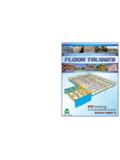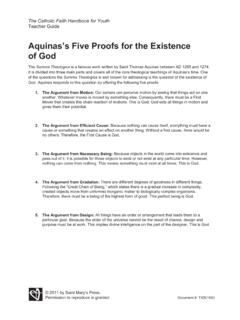Transcription of Design Guide for Hot Dip best practice
1 Design Guide for Hot Dip Galvanizing best practice for venting and drainingServicing: Victoria, South Australia, NSW and TasmaniaPhone: (03) 8727 Guide for Hot Dip Galvanizing best practice for venting and drainingContentsIntroduction 3 Importance 4 of Venting and Draining Purpose Safety Quality Aesthetics General 6 Principles Hanging & Handling Hole Position Hole Size Size & Weight DistortionStructural 13 Sections Hollow Sections Hot-rolled SectionsFrames and 19 Fabrications Handrails/ 25 Balustrades Hollow 28 Vessels Overlapping 29 Surfaces Moving 32 Parts Threaded 33 Items Appendices 343 Design Guide for Hot Dip Galvanizing best practice for venting and drainingIntroductionIt is important to consider the corrosion
2 Protection of ferrous articles when they are being designed. The key factors to consider when designing for hot dip galvanizing are the Design s impact on: Safety during the process Quality of the coating AestheticsThis Guide provides general information on basic Design and detailing practice , including venting and draining, to assist in the safe and quality hot dip galvanizing of Guide for Hot Dip Galvanizing best practice for venting and drainingPurposeFormation of the hot dip galvanized coating occurs from the reaction of ferrous metal and molten zinc. The ferrous metal needs to have a clean, unoxidised surface for the molten zinc to react with purpose of venting and draining is to ensure the article can be immersed and withdrawn from each stage in the process in a safe, efficient and effective manner.
3 Both the pre-treatment solutions (to clean the article) and the molten zinc must be able to flow freely into and around the article so contact is made with all surfaces and all air is displaced. In turn, the liquids must then be able to flow out of and run off the of a sealed article into molten zinc will result in any trapped moisture becoming super-heated steam inside the article and will lead to an explosion (Figure 1). Any trapped fluid from the pre-treatment will expand rapidly when dipped in molten zinc and is also a safety air due to an inadequately vented area of an article has two effects on galvanizing:1) Will stop the pre-treatment solutions from cleaning that section of article and/or prevent zinc contacting the surface so the galvanized coating will not form, creating a bare ) Can cause the article to float in the zinc bath, due to the similar densities of molten zinc and steel.
4 For hollow sections, a general rule is if an article contains more than 15% of its internal volume as air, it will not sink in the molten , vent holes need to be provided to allow air and moisture to density and viscosity of molten zinc are also important factors in allowing adequate drainage of molten zinc from 1: Purpose of Venting and DrainingSealed UnitSuper heated stream inside leads to ExplosionsOne HoleWill vent steam but unit will floatTwo HolesAllows unit to vent and drain and to be galvanized inside and outImportance of Venting and Draining5 Design Guide for Hot Dip Galvanizing best practice for venting and draining5 QualityThe size of holes for venting and draining, as well as their placement, has an impact on immersion and air and fluid, as well as being a safety concern, can cause quality issues (for example, bare spots on the surface).
5 Larger holes allow faster flow of zinc in and out of the article, making immersion and withdrawal easier. This results in a better quality finish. Slow flowing zinc from inadequate holes tends to produce unsightly zinc runs and venting and draining of steel with a more reactive chemistry will grow thicker, duller and more brittle coatings if the article can only be immersed and withdrawn slowly from the bath. If the molten zinc is not readily drained from in or around the article, it may become excessive dead weight on the article or the lifting equipment. This can cause dimensional instability for thin walled hollow vessels ( tanks).Aesthetics Factors affecting the quality of the hot dip galvanized coating may also impact on aesthetics.
6 Hole placement for venting and draining may be an aesthetic issue and should be addressed at the Design stage of the article. For example, the choice of hollow or open structural sections will effect the amount, type and location of venting and draining needed in order for the article to be safely availability of good hanging points for the article is another factor that will improve specific requirements with regards to aesthetics should be discussed with the galvanizer during the Design stage or prior to fabrication. 6 Design Guide for Hot Dip Galvanizing best practice for venting and drainingHanging and HandlingFacilities exist to galvanize components of virtually any size and shape, depending on handling equipment and layout of the galvanizing plant.
7 Most articles to be hot dip galvanized will be suspended from a jig and/or overhead crane using wires, chains, brackets or hooks while being maximum size and weight that a particular galvanizer can process should always be checked at the Design directory listing the dimensions of all galvanizing baths operated by GAA members is available on the website: hanging points should be provided, suspension holes or lugs, taking into consideration article size and the lifting capacity of long, straight sections, 2 lifting lugs are preferred to avoid wire or chain possible, articles are hung on a 45 angle (approximately) to ensure efficient drainage of pre-treatment solutions and molten zinc.
8 This avoids rough surfaces and lets the air escape from the highest point, preventing PrinciplesFigure 2: Hanging for Drainage QualityWhere possible, think 45 degrees!Natural drain to one pointZinc drips off causing spikes and a very rough surface7 Design Guide for Hot Dip Galvanizing best practice for venting and draining7 Long items will often be withdrawn from the bath at a shallow angle to avoid the lower submerged end from touching the bottom of the kettle. A shallow withdrawal angle causes the zinc to flow off at a slower rate leading to a heavier zinc layer on the top surface and greater quantities of ash trapped on the bottom surface of the steel items such as fasteners, nuts and brackets may be placed into baskets rather than hung.
9 See 'Centrifuging process' for more longer or deeper than the bath size may be galvanized by using a double-dipping method. See 'Double dipping process' for more information. In these cases, material handling considerations will impact on cost. A better method may be to use bolted connections or modules for assembling post 3: Touch marks may not be avoidable with chains and wires88 Design Guide for Hot Dip Galvanizing best practice for venting and drainingHole PositionThe location of the vent and drain holes shall be determined by the shape of the fabrication and the angle at which it is suspended for galvanizing, as well as the enclosed volume of zinc in the fabrication when draining.
10 A good rule of thumb for the designer is to think of items being lowered into and lifted from the galvanizing bath at an approximate 45 angle as discussed in Figure 2. Holes should be placed as close to corners and/or connections as practical. Holes must be located as close to the high and low points of hollow sections as possible to prevent air locks, entrapment of pre-treatment chemicals and zinc puddling. Holes should be orientated in the same plane as the fabrication. Holes should not be located in the centre of end plates and connections. Holes should be diagonally opposed where SizeDimensions of holes shall be determined by the trapped volume of air in the fabrication and the surface area of the steel in the vented area.









